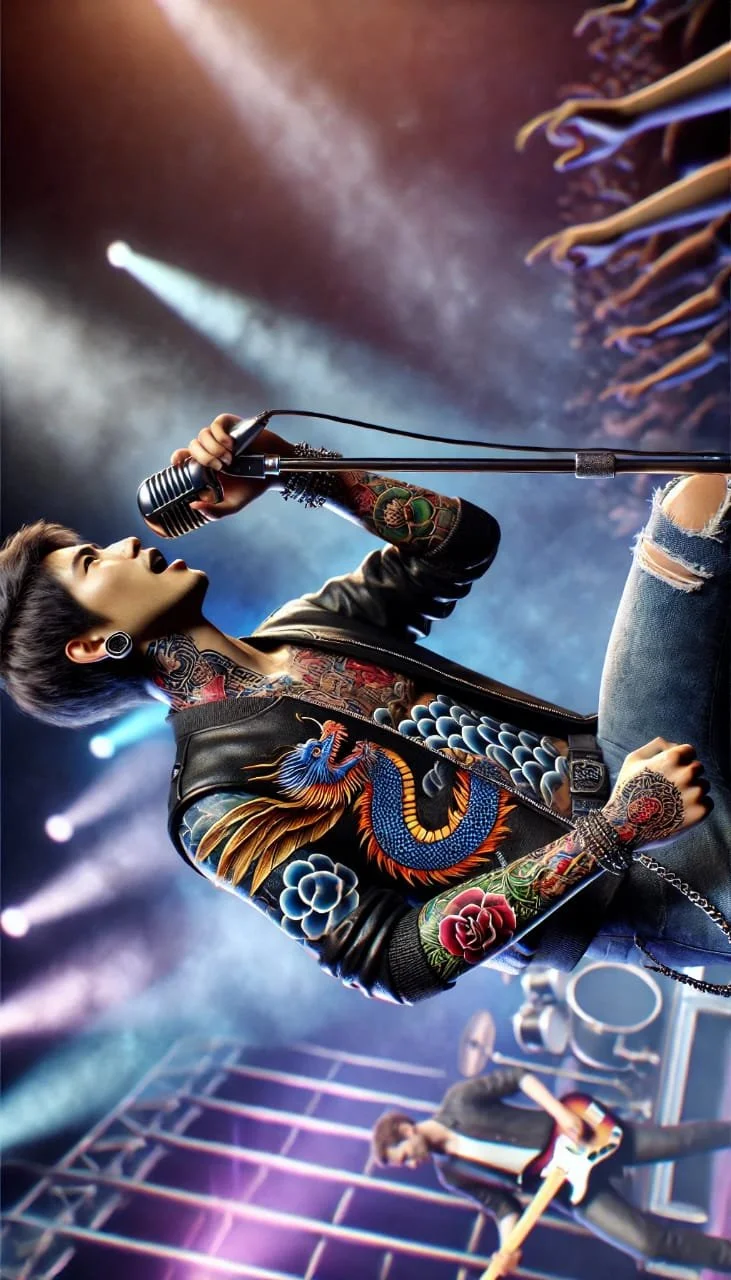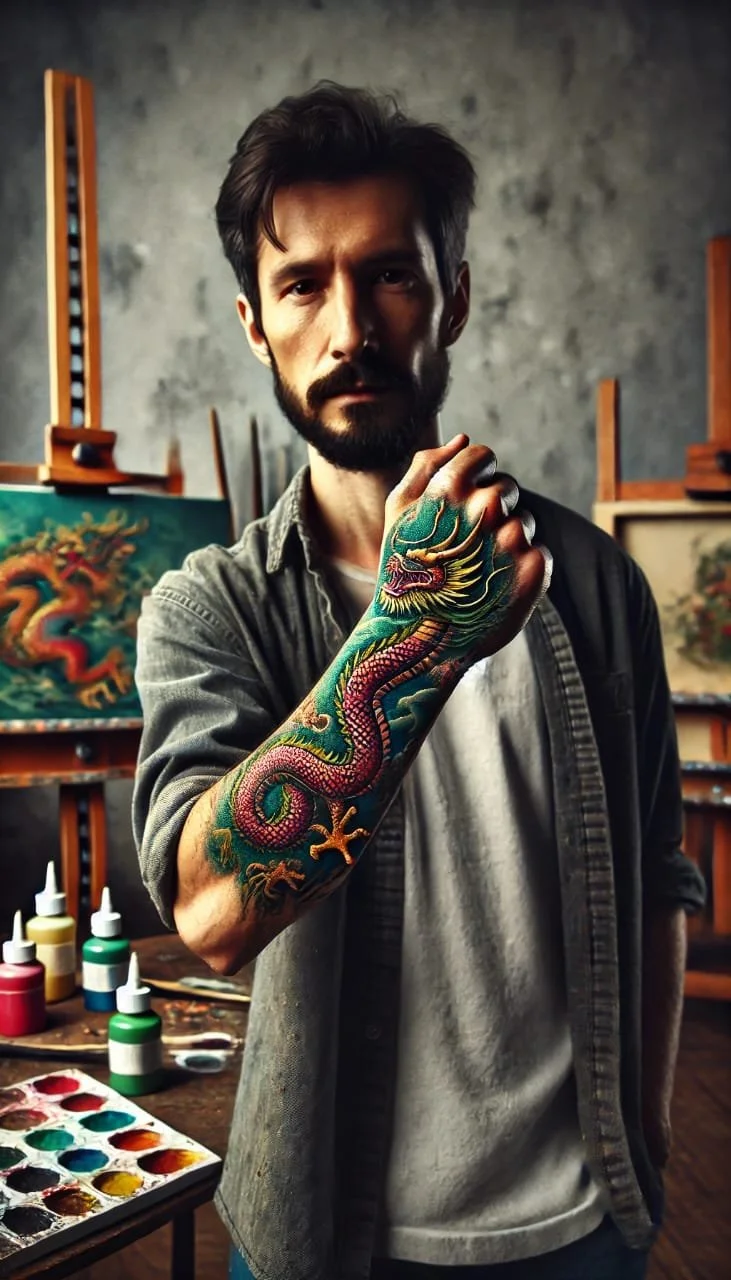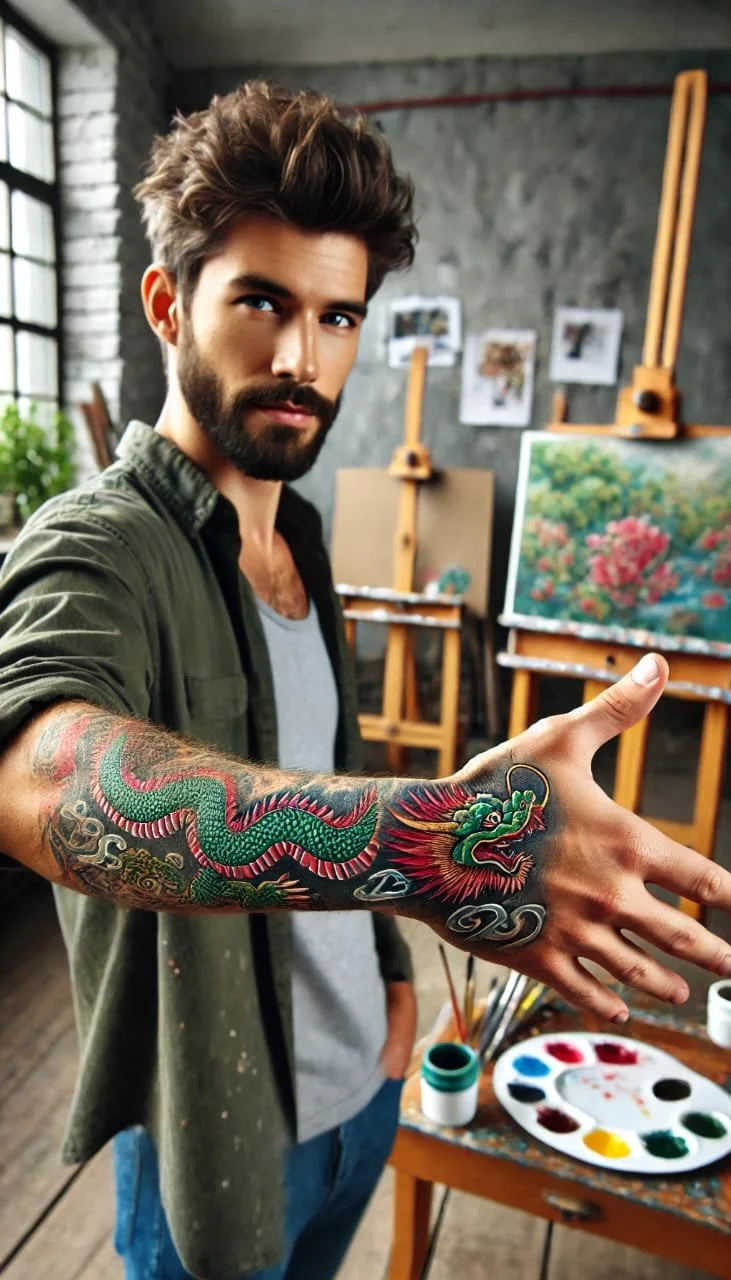Why Your Tattoo Artist Wishes You’d Choose a Traditional Japanese Dragon Tattoo
Most tattoo choices are a dime a dozen. You walk into a tattoo shop, and it's all minimalist designs and fleeting trends. But if you’re after something that truly stands the test of time and leaves an impression, let me clue you in on a little secret: your tattoo artist is probably silently wishing you'd go for a traditional Japanese dragon tattoo.
Now, before you roll your eyes and think this is just another sales pitch, hear me out. The traditional Japanese dragon tattoo is not just ink; it's a centuries-old symbol of strength, wisdom, and protection. It’s a design that carries weight and meaning, far beyond the surface.
Still think that trendy geometric sleeve or delicate floral motif is the way to go? Think again. Traditional Japanese dragon tattoos offer an unparalleled depth of artistry and cultural richness that modern designs often lack. These tattoos are a testament to the skill and creativity of your tattoo artist, transforming your body into a living canvas of historical significance.
So, why should you care? Let’s break it down.
Choosing a traditional Japanese dragon tattoo not only honors a rich heritage but also connects you to a community of art enthusiasts who appreciate true craftsmanship.
The Historical and Cultural Significance of Traditional Japanese Dragon Tattoos
Traditional Japanese dragon tattoos are not just visually stunning; they carry a rich history that dates back centuries. Originating in the Edo period (1603-1868), these tattoos were initially popular among the working class, including firemen and laborers, who believed the dragon's image would protect them from harm. Over time, the art form evolved, incorporating more intricate designs and deeper symbolism, firmly establishing its place in Japanese culture.
Dragons in Japanese mythology are revered as powerful and benevolent creatures. Unlike their Western counterparts, which often symbolize chaos and destruction, Japanese dragons embody strength, wisdom, and protection. These mythical beings are thought to control water, rainfall, and typhoons, reflecting their importance in a country frequently affected by these natural elements.
Choosing a traditional Japanese dragon tattoo isn't just about aesthetics; it's about embracing a symbol that represents profound qualities. The dragon's strength can be seen as a reminder of personal resilience, its wisdom as a guide for thoughtful decision-making, and its protective nature as a source of comfort and security. It's no wonder that these tattoos are cherished by those who understand their deeper meanings.
Moreover, traditional Japanese tattoos, including dragon designs, are crafted with meticulous detail, showcasing the artist's skill and dedication. Each scale, whisker, and flame is carefully inked to create a dynamic and lifelike image that stands out as a testament to the rich cultural heritage it represents.
So, when your tattoo artist nudges you towards a traditional Japanese dragon tattoo, they’re not just suggesting a design—they're inviting you to connect with a piece of history and a symbol that has stood the test of time.
Artistic Complexity and Mastery
Let’s get real—most tattoos can be pretty basic. But when it comes to the artistic complexity of a traditional Japanese dragon tattoo, we’re talking about a whole different league. These tattoos are a showcase of true mastery, blending intricate details with profound symbolism. Ever wonder why your tattoo artist lights up at the mere mention of a Japanese traditional tattoo sleeve?
A Japanese dragon traditional tattoo isn’t just a design; it’s a masterpiece. The dragons are often depicted in dynamic poses, with scales, whiskers, and claws that require an artist’s utmost precision. The level of detail is mind-blowing, and it’s exactly this complexity that makes the process so rewarding for tattoo artists. Each stroke isn’t just ink; it’s a statement of skill and dedication.
The craftsmanship involved in creating these tattoos is akin to a painter’s work on a canvas. But instead of hanging on a wall, this art lives and breathes on your skin. Every scale of the dragon, every twist of its body, is meticulously crafted to create a sense of movement and life. Tattoo artists relish the challenge and the opportunity to showcase their technical prowess and artistic vision.
Now, choosing a traditional Japanese dragon tattoo means you’re opting for a design that is as unique as it is timeless. Unlike fleeting trends, a Japanese traditional tattoo sleeve is a classic that stands out in any crowd. It’s a testament to both the artist’s skill and your appreciation for high-quality art.
Moreover, these tattoos aren’t just about aesthetics. They carry deep cultural significance, symbolizing strength, wisdom, and protection. Wearing a Japanese dragon traditional tattoo is like donning a badge of honor, one that connects you to a rich heritage and a global community of art enthusiasts.
Timeless Appeal and Longevity
Trendy tattoos come and go faster than you can imagine. But a traditional Japanese dragon tattoo? Now that’s a design that never loses its charm. Why? Because it's rooted in a rich cultural heritage and crafted with an eye for timeless beauty.
The traditional Japanese dragon head tattoo, for instance, is not just a head-turner (pun intended). It’s a symbol of strength and protection, attributes that never go out of style. Unlike the fleeting appeal of minimalist tattoos, the dragon head tattoo commands attention and respect, maintaining its allure through the years.
And the traditional Japanese dragon tattoo flash designs are a testament to the enduring appeal of classic tattoo art. Flash sheets featuring these dragons have been a staple in tattoo shops for decades, admired for their intricate detail and powerful symbolism. They offer a level of artistry and depth that modern designs often lack.
What’s the secret to their timelessness? It’s the perfect blend of history, art, and meaning. Traditional Japanese dragon tattoos are more than just beautiful designs; they carry a legacy that resonates with both the wearer and the observer. This deep connection to cultural roots ensures that these tattoos remain relevant and admired, no matter how trends shift.
Personal Empowerment through Symbolism
Getting a traditional Japanese dragon tattoo is a bold statement of personal empowerment. This isn't just some trendy design; traditional Japanese dragon tattoo designs are steeped in symbolism that can resonate deeply with anyone who chooses to wear them.
First off, let’s talk about the sheer power these designs embody. Japanese traditional dragon tattoos symbolize strength, wisdom, and protection. Think about it: you’re not just getting a piece of art; you’re embracing qualities that are universally admired and respected. Wearing a traditional Japanese dragon tattoo is like having a constant reminder of your own inner strength and resilience etched into your skin. It's a way of saying, "I’ve got this," no matter what life throws your way.
But don’t just take my word for it. Take, for instance, Mark, who chose a traditional Japanese dragon tattoo after overcoming significant personal challenges. For him, the dragon’s symbolism was a source of daily motivation and a badge of honor. "Every time I look at it," Mark says, "I feel a sense of pride and strength. It’s a reminder of how far I’ve come." That’s the kind of impact these tattoos can have—transformative and deeply personal.
Then there’s Emma, who decided on a traditional Japanese dragon tattoo design to honor her cultural heritage and personal journey (not that we're using the word 'journey' here!). For Emma, the tattoo represents a connection to her ancestors and a celebration of her identity. "It’s not just a tattoo," she explains. "It’s a part of me, a symbol of where I come from and the strength I draw from my heritage."
These are just a couple of examples, but they highlight a common thread: traditional Japanese dragon tattoos aren’t just about aesthetics. They’re about embodying values and experiences that shape who you are. They’re a way to wear your empowerment on your sleeve—literally.
Choosing a traditional Japanese dragon tattoo means embracing a design that carries centuries of meaning and personal significance. It’s a choice that speaks to your strength, resilience, and connection to a rich cultural heritage. And if that doesn’t raise an eyebrow or two, I don’t know what will.
Community and Connection among Art Enthusiasts
Choosing a traditional Japanese dragon tattoo isn’t just about getting an exquisite piece of body art; it’s about joining a global community of art enthusiasts who appreciate true craftsmanship. When you decide on a traditional Japanese dragon tattoo or even a neo traditional Japanese dragon tattoo, you're tapping into a rich network of like-minded individuals who value the depth and history of this art form.
This isn't a mere club of tattoo aficionados. It's a vibrant community that spans continents, where respect for traditional Japanese tattoos runs deep. You're not just another person with ink; you're part of a legacy that dates back centuries. This shared respect for the artistry and symbolism of traditional Japanese dragon tattoos fosters a strong sense of belonging.
Imagine walking into a tattoo convention and instantly connecting with others who have similar designs. There's an unspoken bond, a mutual understanding of the cultural and artistic significance behind your ink. It’s not just about showing off a cool tattoo; it’s about participating in a global dialogue that honors tradition and celebrates contemporary interpretations.
Tattoo artists specializing in traditional Japanese dragon tattoos often have a profound respect for their craft and its history. By choosing such a design, you’re not just getting a tattoo; you’re showing appreciation for the art form and the artist’s skill. It’s a nod to the meticulous process and the centuries-old techniques that go into creating these masterpieces.
This sense of community extends beyond physical interactions. Online forums, social media groups, and dedicated websites are buzzing with discussions, advice, and showcases of traditional and neo traditional Japanese dragon tattoos. Being part of this network allows you to exchange insights, share experiences, and even seek recommendations from those who share your passion for traditional Japanese tattoos.
Frequently ASKED questions
-
A: A Japanese dragon tattoo symbolizes strength, wisdom, protection, and good fortune. In Japanese culture, dragons are revered as powerful and benevolent creatures that control natural elements like water and wind, embodying balance and harmony. This tattoo design not only represents these qualities but also pays homage to a rich cultural heritage, making it a meaningful and profound choice for body art.
-
A: The main difference between Chinese and Japanese dragon tattoos lies in their symbolism and design. Chinese dragon tattoos typically symbolize power, strength, and good fortune, often depicted as serpentine creatures with long, flowing bodies, four legs, and no wings. They are often shown amidst clouds or water, representing their control over weather and water elements.
Japanese dragon tattoos, on the other hand, symbolize balance, wisdom, and protection. These dragons are usually portrayed with a more fearsome and muscular appearance, featuring three claws instead of the Chinese dragon’s four or five. Japanese dragons are often depicted with elements like fire, waves, or cherry blossoms, reflecting their connection to natural forces and the culture's artistic styles. Both designs are rich in cultural heritage and offer distinct artistic expressions.
-
A: The rules for a traditional Japanese tattoo, also known as Irezumi, are rooted in cultural and historical significance. They include:
1. Symbolism: Traditional Japanese tattoos often feature motifs like dragons, koi fish, tigers, geishas, and cherry blossoms, each with specific meanings such as strength, courage, and beauty.
2. Style: The tattoos are characterized by bold lines, vibrant colors, and detailed shading. They typically cover large areas of the body, such as the back, arms, and legs.
3. Placement: These tattoos often follow a specific layout, with motifs flowing naturally with the body’s contours. Common placements include full-body suits, back pieces, and sleeves.
4. Techniques: Traditional hand-poking methods (tebori) are sometimes used, though modern machines are also accepted.
5. Cultural Respect: It's essential to understand and respect the cultural significance and history behind these designs. Authentic traditional Japanese tattoos are often created by artists who specialize in Irezumi and have a deep understanding of the tradition.
READ MORE…
What are the rules for traditional Japanese tattoos?
Japanese dragon tattoo designs: a dance of tradition, artistry, and modern expression
Traditional Japanese back tattoos | A timeless way to tell your story
Traditional Japanese tattoos - meaningful art forms with a rich history




